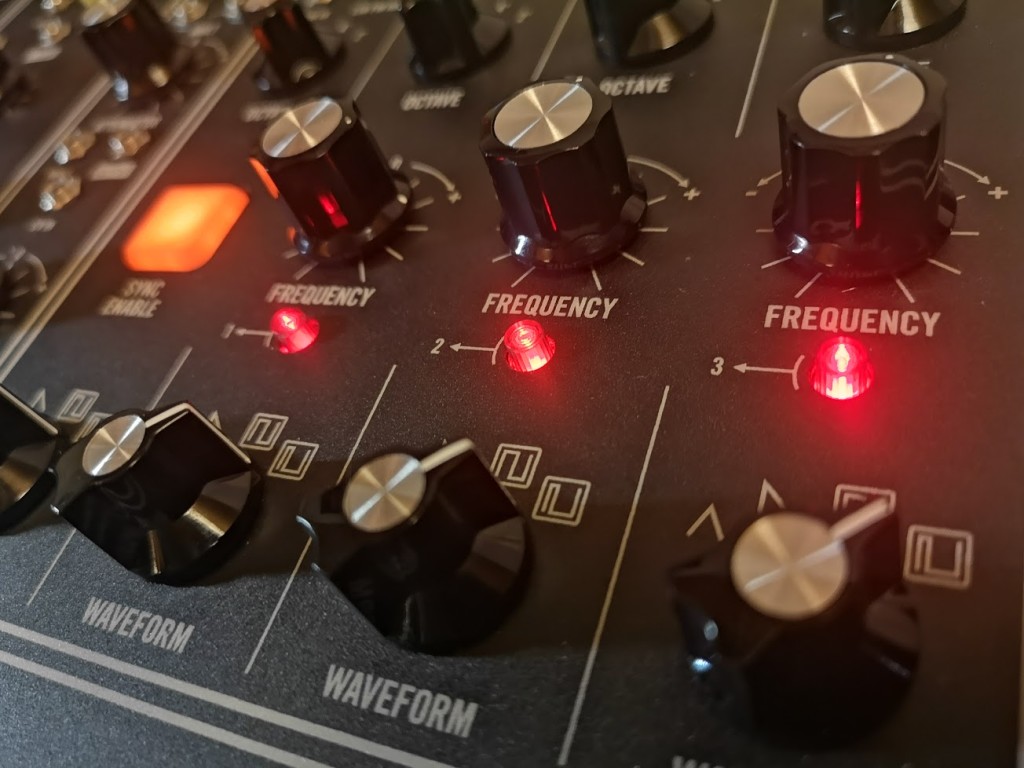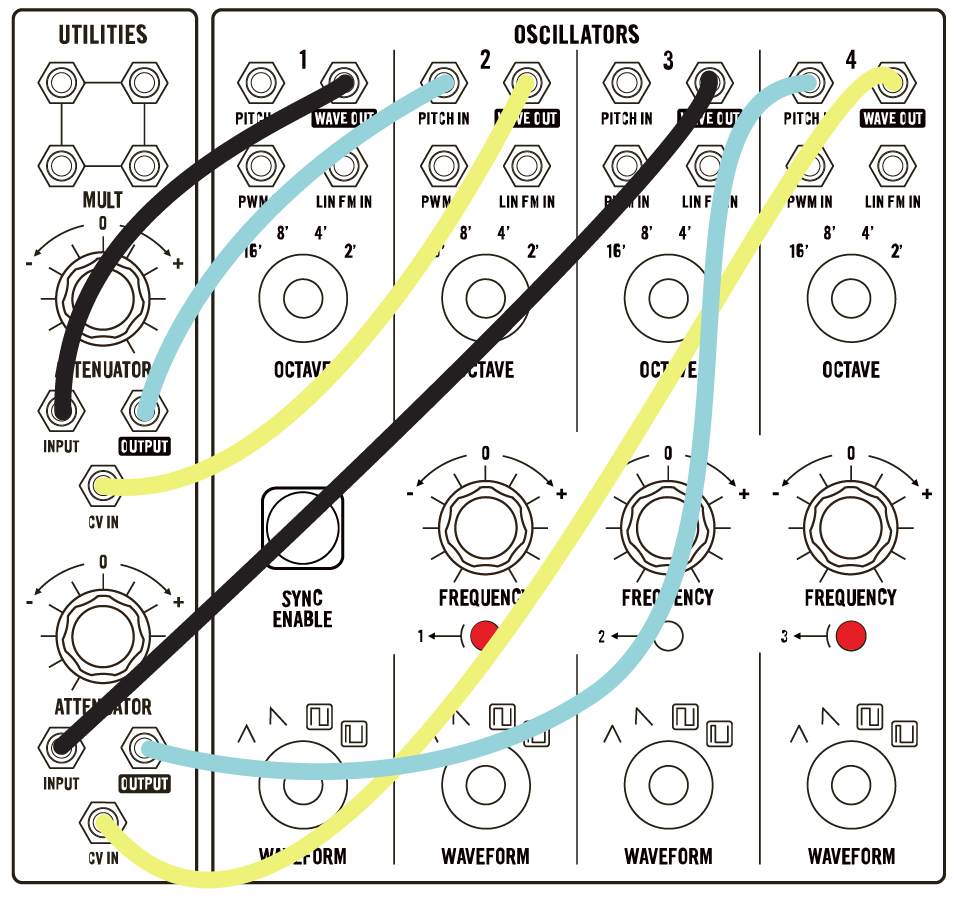Understanding modulation allows you to explore a new synth as an instrument. We invited artist Lars Hemmerling to patch Moog’s Matriarch – both as a showcase for what it can do, and to see techniques that can apply to electronic performance in the broader context.
If you are following along with the Moog Matriarch, or curious to get an overview of its features, do check out our guide to playing the instrument. (Also see our conversation with Moog’s lead engineer on the synth and resident artist, for more from the source.)
But part of why I enjoyed collaborating with Berlin-native Lars is that I feel I can relate to his musicianship. These are etudes in the classical sense – they’re explorations of particular synthesis parameters – but I aways felt some emotions from Lars’ work on this.
Our guide to the Moog Matriarch is presented as a sponsored partnership with Moog Music. Thanks for the support!

Improvised etudes, patch notes
We had Lars keep it simple, to really focus particular ideas. It’s mainly the Matriarch dry, with some light reverb. The Winter Modular Eloquencer, a boutique Eurorack sequencer, adds some additional sequencing and demonstrates how you can integrate with other gear. The Matriarch already has two LFOs, but just to prove you can add more, we add in a Vermona fourMulator quad modulator, too.
The big tips:
- Use the attenuators! With internal or external signal, they let you add some nuance to your modulation.
- Don’t forget the ‘hidden’ ring modulation mode.
- Apply envelopes to the filter. The dual filter already has an ENVELOPE AMT parameter, but you can also route control back into CUTOFF 1 and CUTOFF 2 (separately, even) for more control. That’s especially useful in SPLIT VCA mode, as you’ll see in patch 3.
- For a more experimental approach, try applying control signal to a mixer input or two for offset (see the jam at the end).
- Mod wheel can apply expression – especially as you can determine what it controls.
Patch 1: the basics
Oscillators, hard sync, external sequencing (modulation)

Here’s Lars demonstrating some nuanced patching and performance.
Oscillators: Note oscillators 2->1 are hard synced (see the red light lit below osc 2), and then oscillators 3 and 4 are gently detuned. (The internal sequencer is routed in, as well.) The sawtooth waveform gives this a little touch of acid personality – even with the distinctive Moog ladder filter adding resonance rather than an acid (303) filter.
Gear integration: CV inputs mean, of course, you can work with analog gear. Two polyphonic sequences routed into modulation from the Eloquencer add additional character (along with sync). There’s some external reverb, as well.
The ATTENUATOR adjusts that modulation amount – that’s the subtle shifting you hear in the STEREO DELAY ping-pong effect (by modulating the individual filter cutoffs, you also change what feeds each side of the stereo filter).
The FILTERS section is set to STEREO LP / LP mode for that effect. It’s simple – just left filter, right filter, with modulation on each.
There’s some additional external reverb at the end (for a different character than just the built-in stereo delay).
Patch 2
Patch 2: Pulse width modulation

Gear integration: The fourMulator [external LFO, for fun!] and the Eloquencer add external modulation. But here’s where the Moog utility sections come in, because:
ATTENUATOR: The attenuator lets that modulation amount be controllable.
Pulse width modulation: Each Matriarch oscillator has a PWM input. This time, with the same internal sequence playing, we patch the modulation into the PWM ins on oscillator 1, 2, and 4, to get that fat pulse width-modulation sound.
Pitch modulation comes from both an internal source (LFO) and the Eloquencer routed into oscillator 4.
MODULATION WHEEL is an added expressive control.
Patch 3: ring modulation
Double ring modulation

Keep this one playing; it starts with a very bare and nuanced dual, parallel ring modulation.
Let’s talk about ring modulation. When we say a timbre is “bell-like,” or even “metallic,” we’re talking about sounds with frequency content that isn’t entirely harmonically related. It’s the clangorous sound of clashing frequencies rather than the open sound of frequencies that relate mathematically. Ring modulation is a very specific way of achieving these kinds of complex components in a sound. It’s still somewhat exotic to people, but it’s actually 1934 tech.
One of the strengths of the Matriarch is its precision and nuance, electrically. So ring modulation is a very controllable effect on the Matriarch, and it’s available – even if (and this is important) “RING MOD” is not literally silkscreened on the panel the way it is on some synths, both modern and vintage.
The “ring” in ring modulation is at the circuit level. (Cue Johnny Cash singing “a ring, ring, ring – a ring of diodes, a ring of diodes.”) So actually the thing to remember is this – two inputs, one output – sum and difference tones, and wild metallic results. (The Wikipedia article on the topic tells you more than you want to know, but has some nice signal diagrams.)
On Matriarch, as our guide explains, the ring modulator is a hidden feature of each ATTENUATOR:
Signal 1 (carrier): ATTENUATOR IN
Signal 2 (modulator): ATTENUATOR CV IN
Output ring mod: ATTENUATOR OUT
Lars doubles this by using both attenuators of the UTILITIES module – so Osc 1 + 2 > ring mod, Osc 3 + 4 > ring mod. (Connect the WAVE OUT of each of the oscillators to the carrier and modulator – Attenuator INPUT and CV IN.) Then, use the ring-modulated signal for frequency modulation by routing it to PITCH IN.
The resulting patch is terrifically flexible; let’s zoom in on that part:

By changing the coarse/octave and fine tuning of oscillators, and adjusting the filter and its envelope, you can get a vast range of sounds. Open up the filter for more of the harmonically complex sound, or close it again to tame the result. You can also toggle SYNC ENABLE and get a subtler effect by forcing the waveforms into sync – try it with sync on osc 2 and 4 enabled, for instance.
But there’s more:
VCA Split mode: Lars enabled Split. In this mode, the filter envelope controls the A output (left) and amplitude the B output (right). Now, here’s the twist – hold on –
Patch both envelopes back to cutoff. You can also patch those envelopes back into the stereo filter, so FILTER > ENV OUT to CUTOFF 1 IN, AMPLITUDE > ENV OUT to CUTOFF 2 in.
“You get a nice, percussive, crispy, metallic stereo sound,” notes Lars.
Repatch on the fly. Patch cords! You can plug and unplug them as you play! So Lars disconnects those envelopes from the filter halfway through and modulates the tuning instead.
Play some more. You’re always free to make nuanced shifts in sound. Keep watching, and Lars plays with modulation wheel and mixes in STEREO DELAY. He also toggles to two-voice paraphonic.
I loved the softened patch so much that I had to keep it going, which you saw in our first article:
Patch 4: let’s jam
DC offset into Mixer, external gear
That was all quite serious, let’s jam this out.
DC signal to MIXER. This has become my unexpected favorite feature of the Matriarch. Route a control signal into the mixer, and you offset the summed audio signals in the mixer, for distorted/asymmetric sounds – here, making the groove pulse. I especially like that you can then modulate and overdrive that result.

Gear integration: That is a Roland TR-626, a 1987 drum machine that is … not particularly special on its own. But it’s late enough that it has MIDI onboard, so we can show off that the Moog Matriarch also does MIDI and easily syncs to MIDI clock as well as to analog trigger – with the ability to sync up its various modules. (That’s not something easily done on a Moog 900 series modular.)
Also, Lars modded his 626 so that it has an onboard ROM with LinnDrum samples, for some extra edge.
For more
There is one more bonus round with some extra tips and demo. Meanwhile – previously, we spoke to Moog’s engineer and resident artist:
And check a full guide to this synth, parameter by parameter, module by module:
And here is more of Lars’ music, in an excellent release out on Dasha Rush’s label:
Credit:
Video technical assistance, Roman Conrad
Thanks to Factory Berlin for the use of their space.